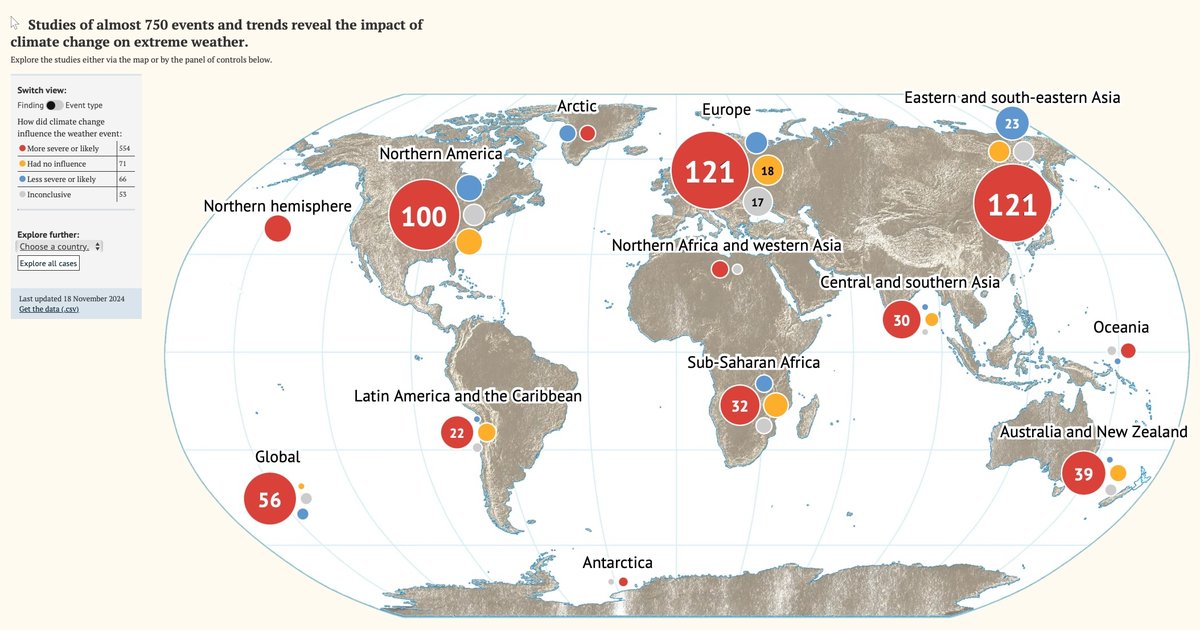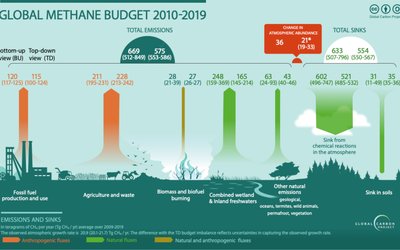Mapped: The fingerprint of climate change in extreme weather events across the world
November 19, 2024

Illustration: Carbon Brief
Something new
Twenty years ago, climate scientists decided to try something new. They started the so-called ‘extreme weather attribution’ studies: analyses of individual extreme weather events to assess whether they are related to climate change. In these studies, an extreme event is commonly simulated with climate models with and without human forcings of the climate system. From a comparison of these simulations, it can be established whether human-caused climate change has made a particular event more likely. The first extreme event that was studied with this new approach was the European heatwave of 2003.
Mapped by Carbon Brief
Now, 20 years later, 744 extreme weather events and trends have been analysed with this extreme weather attribution approach. Most of them are related to heat (28%), rainfall and flooding (24%), and drought (14%). Carbon Brief has mapped every published study. Their overview is published online.
Most studies for global north
The overview shows how climate change has influenced extreme weather across the world. Unfortunately, the overview does not reflect the actual occurrence of climate-related extreme events across the globe. This is partly because most of these attribution studies are being carried out for the global north, where most of these scientists are based. Also, there is a lack of weather data and monitoring of extremes in many developing countries. Still, the overview of results is impressing, and it is clear that the impact of climate change on extreme weather events can no longer be ignored.
Fingerprint climate change
Across all the analysed cases, 74% were made more likely or severe because of climate change. Around 9% of the cases – mostly blizzards and cold extremes – were made less likely or severe by climate change. In the remaining 17% of events, the studies either found no human influence (10%) or they were inconclusive (7%), often due to insufficient data.








